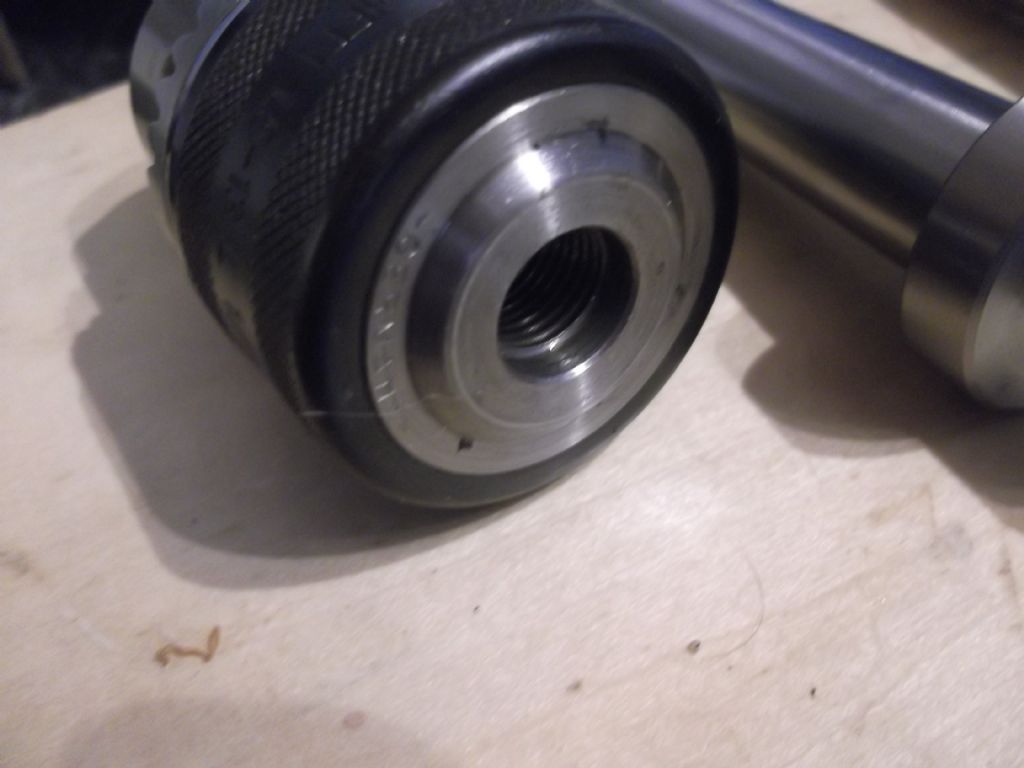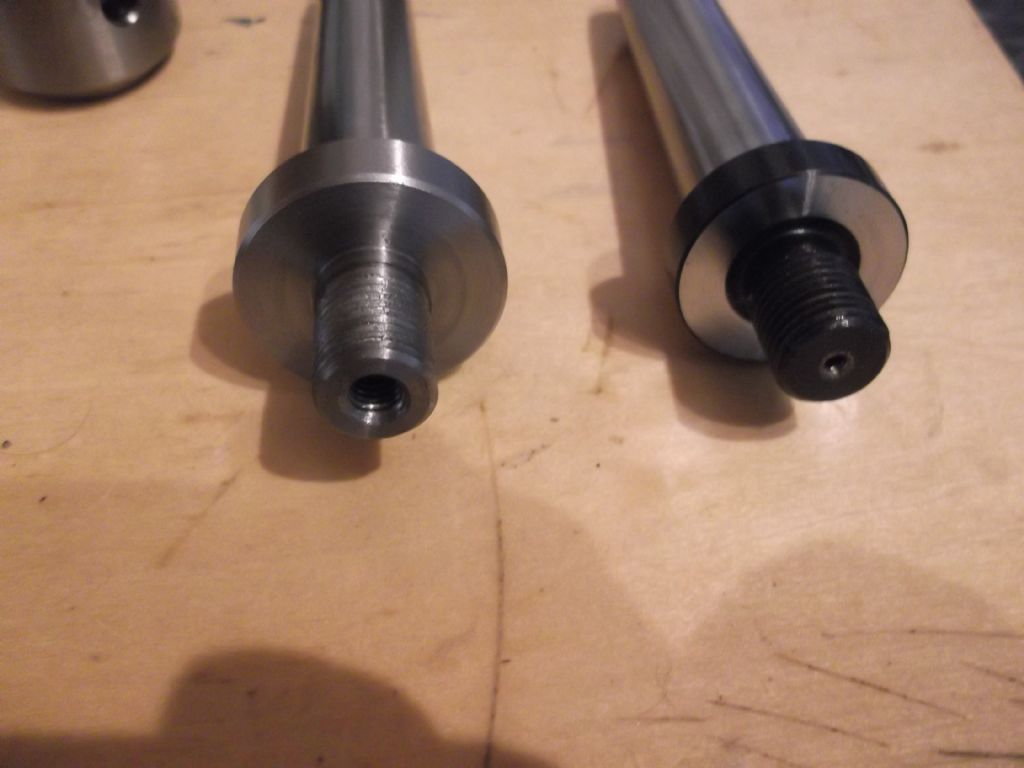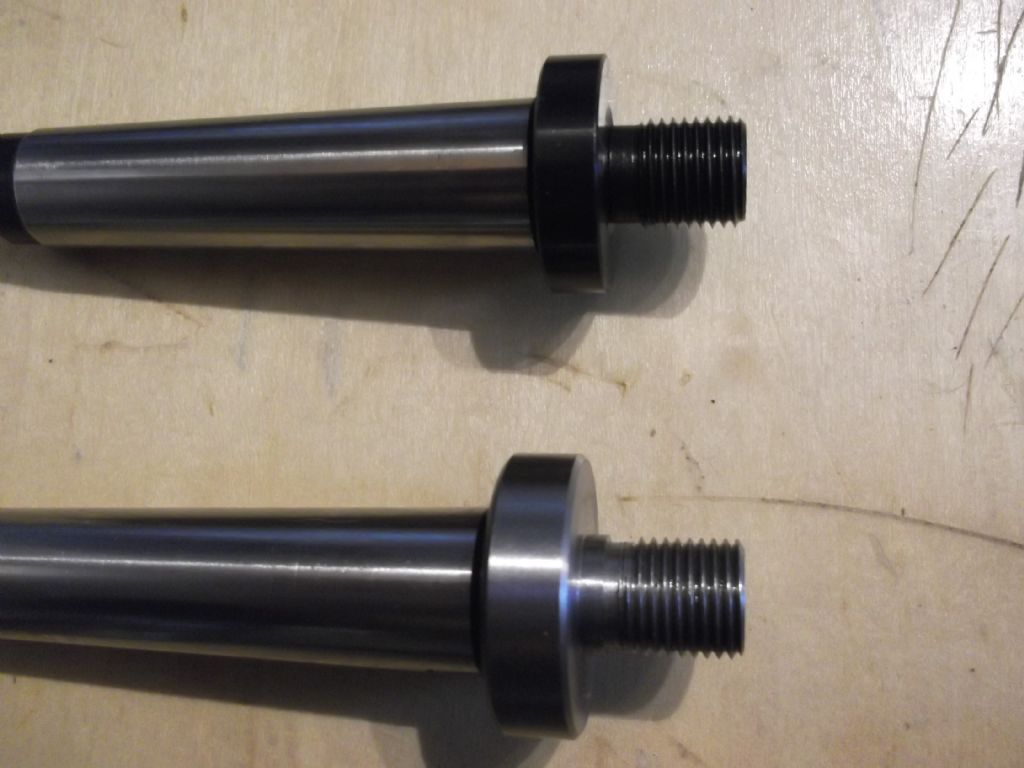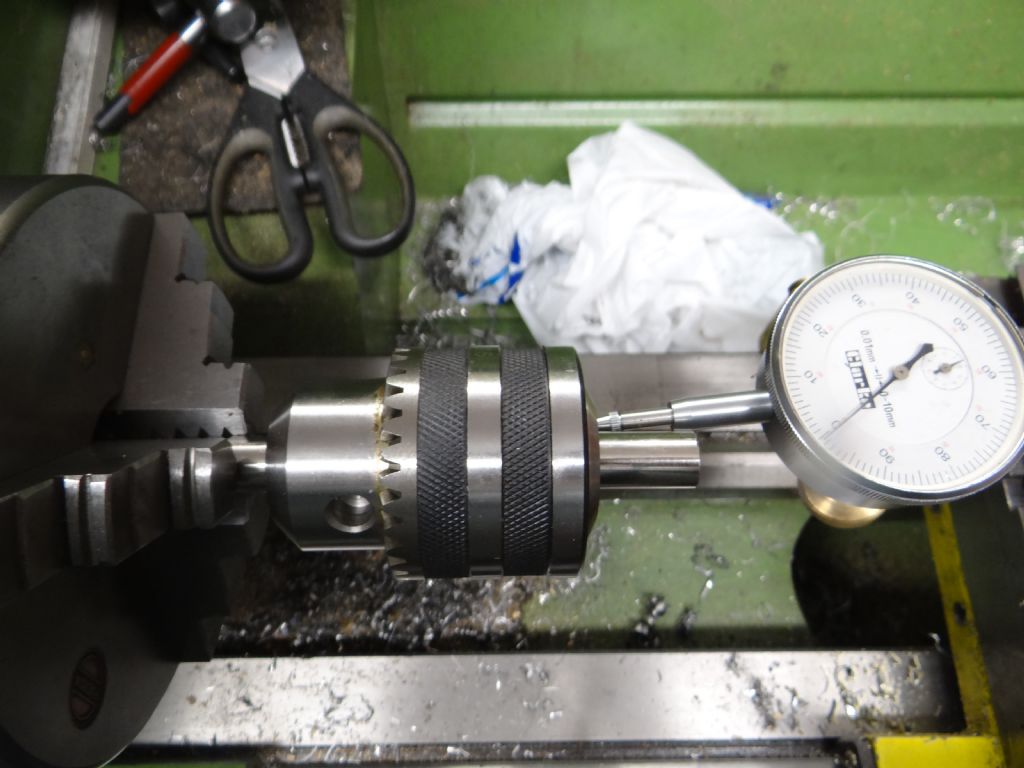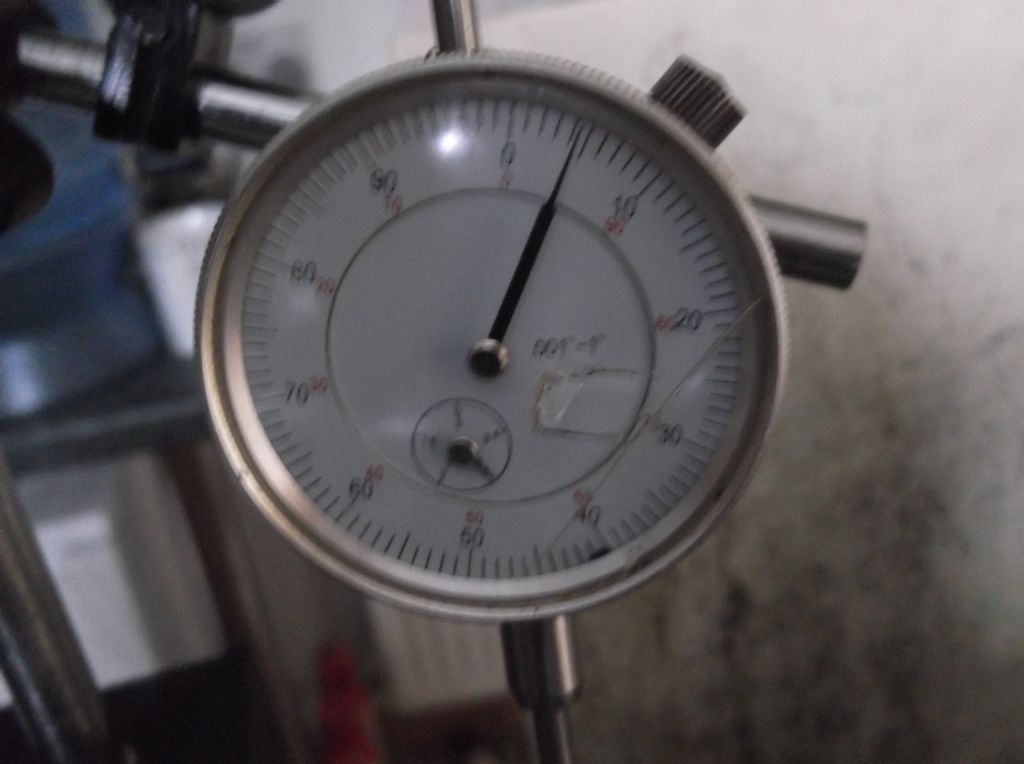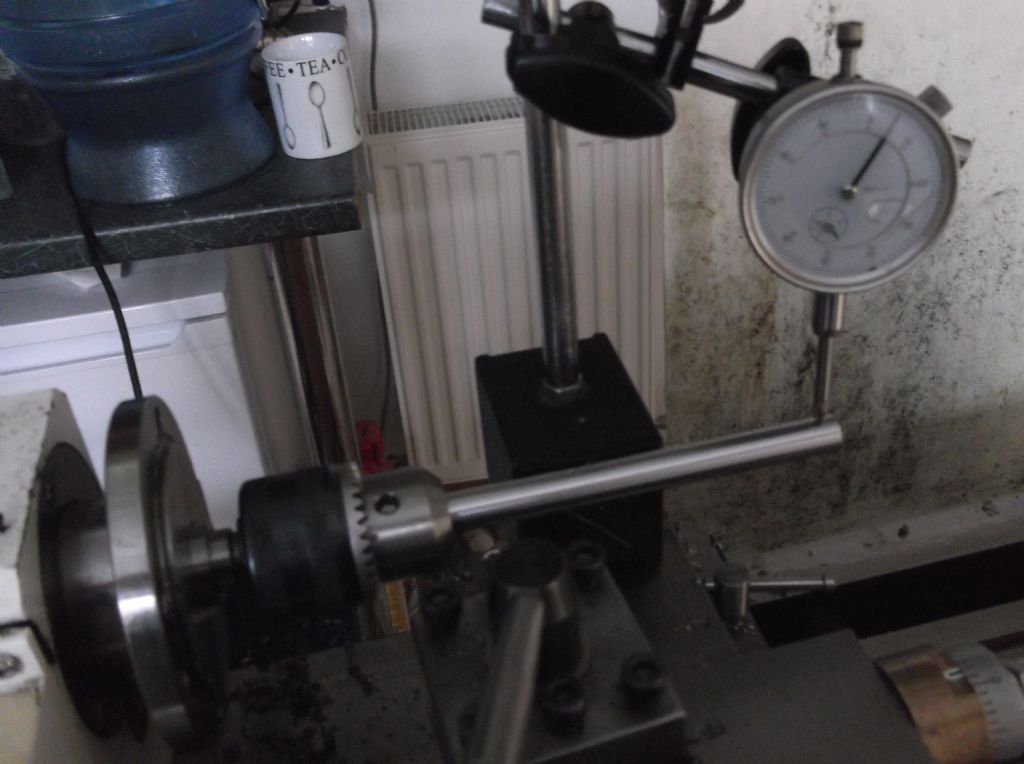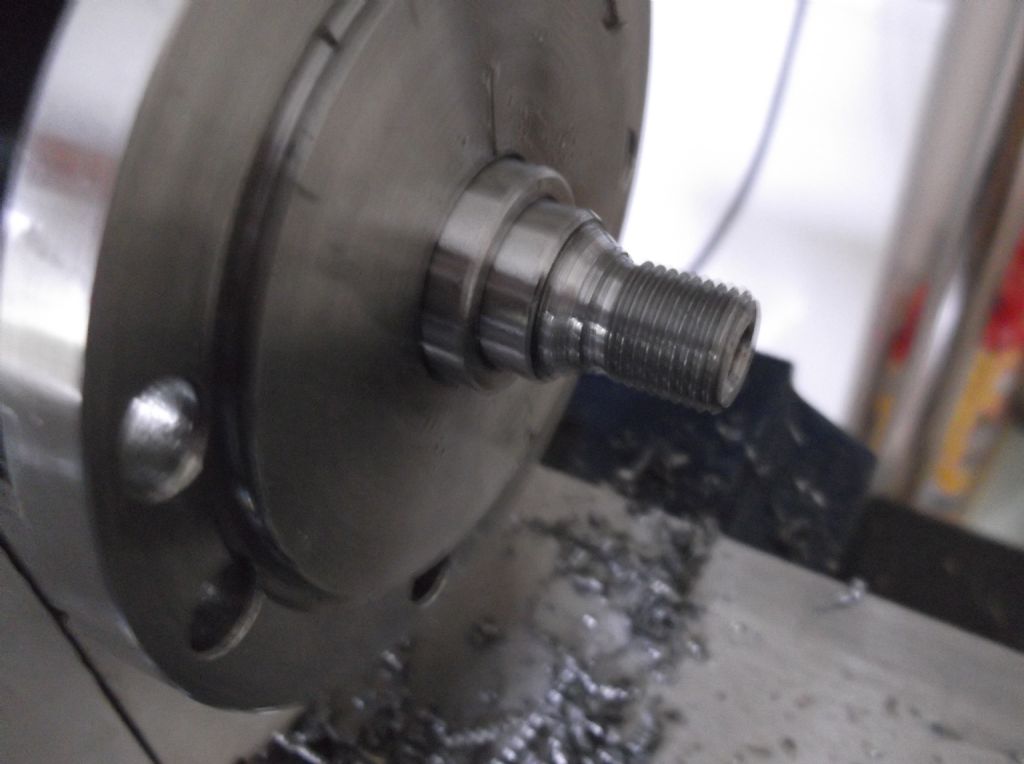I seem to have aquired a few 1/2" 20tpi threaded rohm drill chucks
A few years ago i got a fairly nicely made mt2 arbor.
When i decided to purchase another, the design had change & the runnout was awful.
Finally got round to making myself another "better" one but it hasn't quite worked out right. What i want to know is where i've gone wrong.
I know taper fit drill chucks seem to be the norm in engineering. I can't see why a screw fit should be inherrently less accurate. If you note from the 1st photo there appears to be a register on the chuck, (which should be used?) i measured this a smidge over 1/2"
The commercial arbor is the one with blackened parts & undercut on the shaft near the flange.
I've found it decent enough but the runnout changes each time you screw the chuck on so a bit of messing about to get rewasonable runnout & not really viable for changing between chuck sizes like i was hoping.
My homebrewed one is the shiny one. 
Note i tried to incorporate a register where the shaft & flange meet, you can't really see from photo but flane & shaft were slightly undercut where they meet.
Making one wasn't so difficult, worst bit was hogging out the excess material, lots of hot chips !
Took great pains to setup & work as accurate as i can.
Snook up on the shaft dia till the end of the shaft would just fit in register.
Then shaved a little off the part to be threaded. Tappped center l/h thread for securing screw for good measure.
1st time i cut imperial thread. At least i got the change wheel calcs right 55-40-40-65 on mini lathe gets you within a gnats whisker of 20 TPI.
My thread ended up quite a snug fit, much better than the loose one on the commercial offering.
All seemed reasonable(if not perfect) till the chuck screwed home onto the flange, then runnout was awful.
Must confess , after much thought & messing about i ended up shaving a couple of thou out of the threads & off the register diameter. Everything was looser, but runnout still got messed up when the chuck mated onto the flange.
Whatever the actual runnout of the drill chuck, i would have hoped i could at least make an arbor where the BODY of the chuck is no worse than a thou runnout!!
So, anyone got any ideas where i went wrong? is my concept fundamentally flawed? should i remove that register entirely & see what happens?
If you note on the commercial offering the flange is undercut, leaving an outer ring as the mating surface~ why? Is this the way to go.
I just want to understand where I went wrong, I'll make another , if i can get a better grasp of what would be the correct way to make to minimise runnout.
Any ideas?
Thanks!
& yes, i do realise drilling is not a precise opperation, but I'd rather it be closer to the ideal than miss by a royal mile. 
It was a good practice piece even if it didn't turn out as intended.



Macolm.


